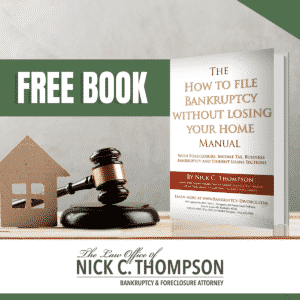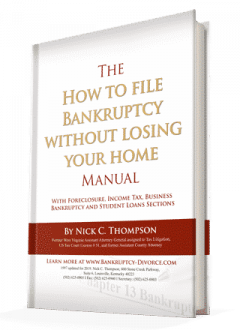Until 2005, students could freely file bankruptcy and discharge private student loans. Additionally, prior to 1998 student loans could go into bankruptcy 7 years after they became due. However, since 2005, the bankruptcy options on student loans are cut down to discharging the debts only if they meet the qualifications for a hardship discharge. There are other categories for discharging the debt but they are very few.
 What is a Hardship Discharge?
What is a Hardship Discharge?
First, hardship means that the court must rule that repayment of the student loan creates an undue hardship on the debtor and his family. Secondly, undue hardship means that the debtor is not able to maintain an adequate standard of living and repay the loan. Thirdly, the debtor must prove that repayment and living at minimum standards are impossible. Finally, he must also prove that this situation is unlikely to improve substantially over time.
⎆ U.S. Supreme Court in MARIE BRUNNER, v. the New York State Higher Education Services Corp
Interestingly, most judges use the undue hardship from the 1987 case appearing before the U.S. Supreme Court in MARIE BRUNNER, v. the New York State Higher Education Services Corp. Most student loans in default can go into rehabilitation, consolidation, or extension. They can also discharge if the default is because of disability. As long as a loan is able to convert into an income-based repayment loan it is most likely impossible to discharge. Interestingly, income-based repayment loans can have very low rates of repayment. Additionally, private loans cannot be converted to income-contingent loans.
⎆ There are Many Options Available for Student Loans in Default
If the borrower reaches the “wage garnishment” stage, there is comfort in that the federal regulations limit the amount of the borrower’s garnishment to 10% of the total amount of the loan. However, before reaching that stage, other options are available. Those options include contacting various agencies that offer workouts and student loan consolidation programs. This also includes programs based on income.
To hardship discharge a student loan the debtor has to show that he has exhausted all of the other options and bankruptcy is his last resort. One of the better arguments is to show that a partial discharge will allow the debtor to discharge the part of the debt that will make it an undue hardship and that the debtor will remain responsible for the remainder. If the Debtor makes an all or nothing argument to the court he must first have a very strong case to support undue hardship.
Nolo Press and EdFund have information on student loans. Carreon & Associates also provides information on loans in default. Additionally, the Department of Education and Consumer reports provide facts on graduated payments.
Do you need help managing your student loan? Contact my office right away to start the conversation. Nick C. Thompson, Attorney: 502-625-0905
 Resources for Student Loans
Resources for Student Loans
Hardship Discharge Student Loans • Video
How to Stop Student Loan Wage Garnishment
Current Student Loan Interest Rates
How to Stop Student Loan Collections and Garnishments with Bankruptcy
Bankrupt or Discharge Student Loans • Video
Student Loan Rehabilitation Law New Regulations
Do you need help managing your student loan? Contact my office right away to start the conversation. Nick C. Thompson, Attorney: 502-625-0905.

 What is a Hardship Discharge?
What is a Hardship Discharge?

